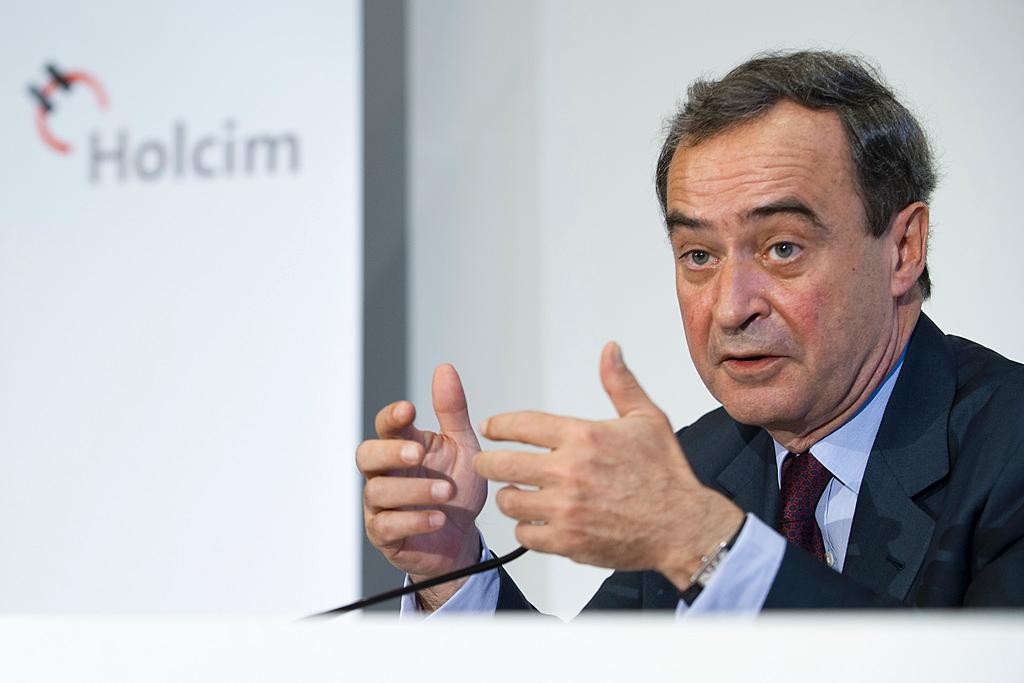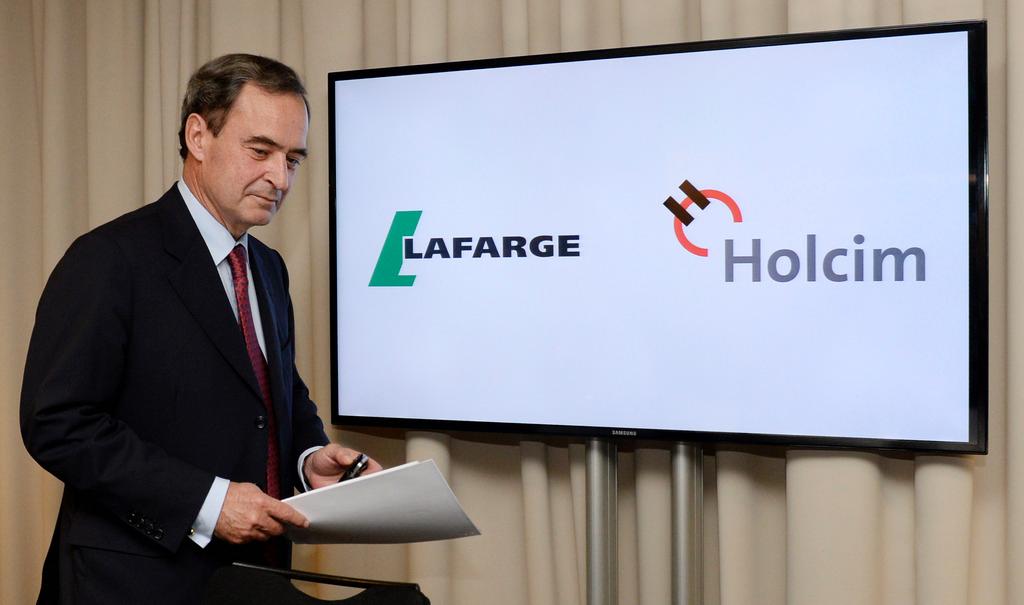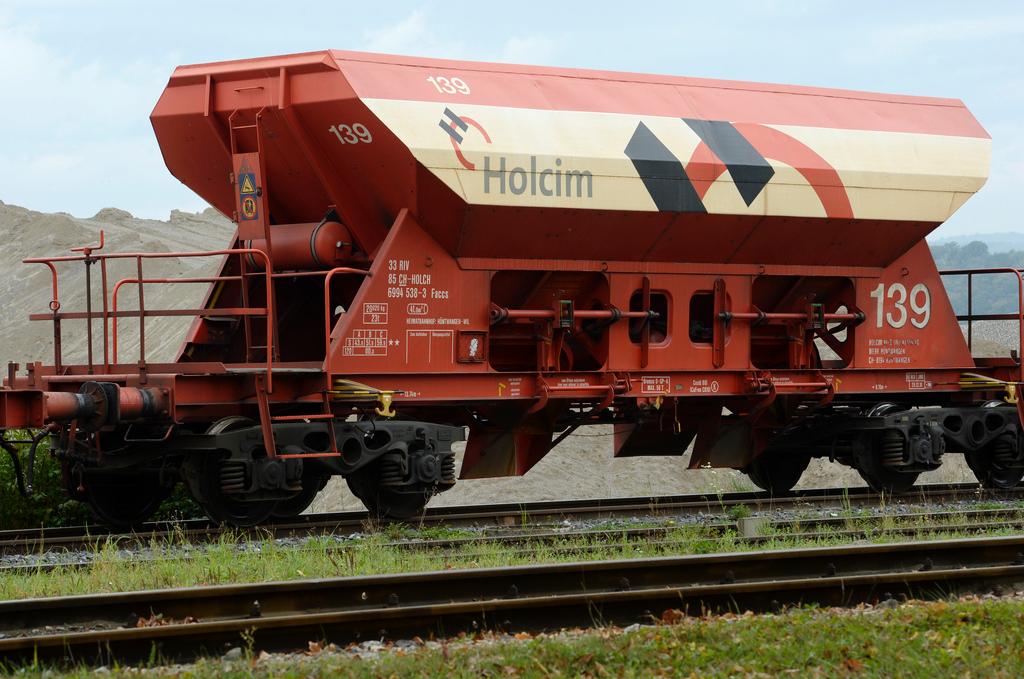Lafarge chief moves to mend merger’s cracks

Sporting a light tan and wreathed in smiles, Bruno Lafont shows no signs of fatigue as he nears the end of a bruising and exhausting merger.

More
Financial Times
External link“There is enormous value to create, the team is there in place and everyone is working to get the deal completed,” he says.
The chairman and chief executive of Lafarge believes that the €41billion (CHF59.8 billion) tie-up with Holcim, creating the world’s largest cement company by revenues in an industry plagued by overcapacity, will be completed by the summer.
Both companies continue to bill the deal as a merger of equals, despite it looking increasingly like a takeover of the 182-year-old French company by its Swiss rival.
First announced in April 2014, the deal came near to collapse earlier this spring, amid public wrangling between the two companies. The outcome was a renegotiation of the price in favour of Holcim and the removal – at Holcim’s demand – of Mr Lafont as the chief executive of the merged entity.
Instead he will take on a co-chairman role with Wolfgang Reitzle, Holcim’s current chairman and the future statutory chairman of LafargeHolcim.
Effect
A far from usual arrangement in Switzerland – or elsewhere – it prompted Ethos, the Swiss shareholder group, to warn on Thursday that it would have a negative effect on corporate governance at the merged entity. Others have suggested the co-chairmanship for Mr Lafont is a sinecure to allow him to save face, rather than a genuine leadership role.
Mr Lafont categorically rejects this view. “This co-chairmanship is not a power game. It’s a good pioneering idea. I will contribute effectively my knowledge, my network, everything I can contribute, but I will not lead.”
People close to Mr Lafont suggest the personal attacks against him came from individuals who wished the deal to fail, and who used him as a convenient scapegoat. Others suggest his management style convinced Holcim’s leadership they could not work with him.
Co-chairmanship
Mr Lafont has not yet discussed with Mr Reitzle exactly how the co-chairmanship will work, but he takes pains to reassure those unconvinced about the new company’s management arrangements that he will allow the Lafarge operations director who will take his original role at the new company to have free rein.
“Of course Eric [Olsen] will be fully in charge to lead the company and I will find my role. I think Eric is ready [and] has all the skills which are necessary to manage a big company.”
The French-American Mr Olsen, who worked on the integration of Orascom, the Middle Eastern cement company that Lafarge bought in 2007, has been doing the rounds of investors, a process that Mr Lafont says is going well. The deal appears to be progressing nicely in other areas too. It is now on the verge of clearing all the (substantial) regulatory hurdles it faced at the outset, and last Friday received the final sign-off from the European authorities for a €6.5 billion asset sale to CRH, an Irish competitor.
However, there are potential bumps in the road ahead.
Bumps ahead
Lafarge’s two largest shareholders, the holding companies of Belgian Albert Frère, and Nassef Sawiris, Egypt’s richest man, are already in favour of the deal.
But ISS, the shareholder advisory service, while acknowledging that it had a “clear strategic rationale”, warned last week [April 20] that bridging the cultural gap between the two companies remained a challenge, that promised synergies might not materialise,and that Mr Olsen was untested as a chief executive and execution might as a result suffer.
Mr Lafont is sanguine, saying “there is a good momentum, we are close to the end” but he refuses to comment on whether Filaret Galchev, head of Eurocement, the Russian company that is Holcim’s second-largest shareholder, will receive a seat on the board of the merged company as he has requested in return for his support.
The request, if acceded to, would disrupt the careful balance of seven Lafarge representatives to seven Holcim representatives on the merged company’s board.
Opportunity
And he airily waves away concerns that disagreements between Holcim’s former biggest shareholders, the founding family of Thomas Schmidheiny and Mr Galchev, not to mention potential friction as the two co-chairmen work out their respective roles, could impede the smooth running of LafargeHolcim.
“Worries? Why should I be worried?” he says. “To merge these two companies is a once-in-a-generation opportunity to transform an industry.”
He argues that the benefits of the deal, such as the €1.4 billion in promised savings, far outweigh its challenges.
“When you put two people together, one of Lafarge with one in Holcim, they are rapidly talking about how to get the best idea from the other. If they do that, there is a huge amount of money to make and that is part of the synergies.”
He will not say, though, what return on capital the new company will target, a key question for investors given that in recent years Lafont has been able to fund its dividend only through asset sales rather than from cash flow.
Instead he argues that the cultural differences between Holcim and Lafarge have been overplayed. “The most important thing to remember [is that] the things which are uniting us are much bigger than the things which are dividing us, and what is uniting us is the fact that we are all cement people.”
A “cement person”, according to Mr Lafont, has a time horizon of 50 years. Hopefully investors will not have to wait that long before they are able to judge whether LafargeHolcim is a success.
Copyright The Financial Times Limited 2015

In compliance with the JTI standards
More: SWI swissinfo.ch certified by the Journalism Trust Initiative



You can find an overview of ongoing debates with our journalists here. Please join us!
If you want to start a conversation about a topic raised in this article or want to report factual errors, email us at english@swissinfo.ch.